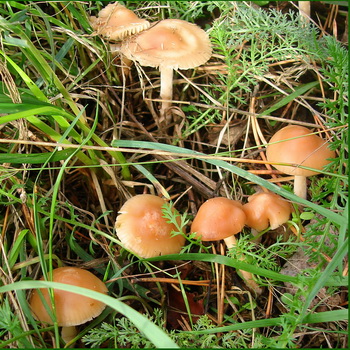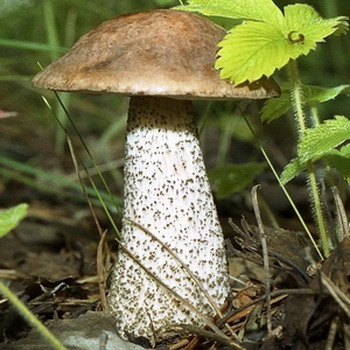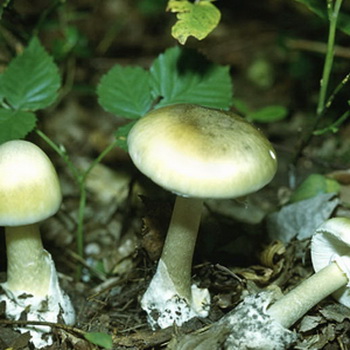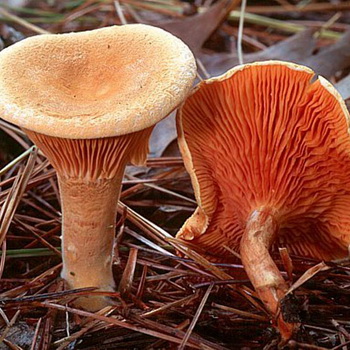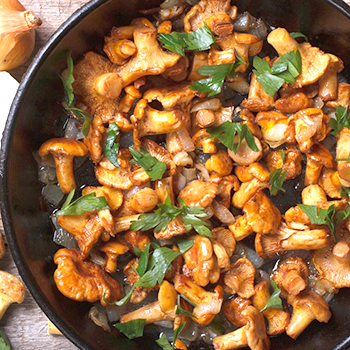Are there milk mushrooms in October: is it possible to collect them
 Silent hunting is such an activity that you want to extend until the snow itself. Therefore, avid mushroom pickers collect forest gifts as long as possible.
Silent hunting is such an activity that you want to extend until the snow itself. Therefore, avid mushroom pickers collect forest gifts as long as possible.
The important question is: are there milk mushrooms in October, and if so, where can they be found this month. This article tells about the forest in which milk mushrooms grow in October and with what tricks you can see them among the abundantly falling leaves of the trees.
Read, absorb the information and put it into practice. We hope that this will allow you to get a rich catch of mushrooms on a quiet hunt in the fall.
How to look for milk mushrooms in October
 Mushroom picking is an active, exciting, incomparable rest. Everyone has access to a "quiet hunt" with a basket in hand. Therefore, mushroom pickers are the most numerous host among tourists and hunters. It is better to look for milk mushrooms in October when the sun rises, in the dew or in the rain: the hats shine, it does not dazzle in the eyes, the sun does not blind. And then the mushrooms are the most juicy, strong, fragrant, or, as they say, vigorous. To preserve the freshness of the mushrooms, it is best to collect them in a wicker willow basket.
Mushroom picking is an active, exciting, incomparable rest. Everyone has access to a "quiet hunt" with a basket in hand. Therefore, mushroom pickers are the most numerous host among tourists and hunters. It is better to look for milk mushrooms in October when the sun rises, in the dew or in the rain: the hats shine, it does not dazzle in the eyes, the sun does not blind. And then the mushrooms are the most juicy, strong, fragrant, or, as they say, vigorous. To preserve the freshness of the mushrooms, it is best to collect them in a wicker willow basket.
You cannot collect mushrooms in buckets, bags, plastic bags - mushrooms crumple in them, crumble, air does not enter such a container, and the mushrooms "burn".
Mushrooms bear fruit from spring to late autumn, but unevenly, and in waves or, as they say, in layers. In total, there are 3 or 4 layers in the middle lane.
Do milk mushrooms grow in October and can they be harvested

The answer to the question of whether milk mushrooms grow in October is positive, and in the fall we can collect mushrooms such as:
- Oak lump




The cap is up to 10 cm in diameter, initially convex or flat-spread with a curved edge, slightly depressed, later funnel-shaped, with noticeable concentric zones, brick-ocher, brownish-reddish. The plates are frequent, weakly descending, pale ocher, with age in brown-rusty spots. The pulp is white; as the mushroom grows, it acquires a reddish tint. Milky juice is not plentiful, slightly bitter, watery-white, does not change color in air. The leg is up to 10 cm high, solid, in the old mushroom it is hollow, brittle, even or curved, of the same color with the cap, reddish-rusty at the base. It grows in small groups in deciduous and mixed forests with an admixture of oak, around middle-aged oaks in low grass and on a forest floor, forms mycorrhiza with oak. Forms fruiting bodies in July - October.
- Bitter milk




A cap with a diameter of 3-10 cm, flat-convex with a tucked edge, then convex-outstretched, funnel-shaped, with a papilla protruding in the center, dry, smooth, silky, without concentric rings, evenly colored dark brown, The plates of young mushrooms are light , in mature ones they are yellowish-brown, often with a whitish bloom from spores. The pulp is whitish. Rarely wormy. Milky juice is abundant, white or colorless, acrid, burning. The leg is solid, becomes hollow with age, often with a hollow, whitish-tomentose at the base. Grows from July to October in coniferous and mixed forests in large groups. Forms mycorrhiza with pine and birch. Bitter is collected in large quantities due to its wide distribution, high yield, resistance to damage by insect larvae.
- Gray lump


The cap is 5-15 cm in diameter, densely fleshy, from initially convex it becomes concave-prostrate with a bent wavy edge, usually without zones or with weak concentric circles, smooth, slimy. A mushroom with a very variable color: lilac-gray, bluish-gray, lead-violet-gray, grayish-reddish-yellow, with age acquires an ocher-pink or purple hue, sometimes with watery spots, in places of pressure it becomes brown or brownish. Therefore, the mushroom defies definition for a long time.The plates are adherent or weakly evading along the stem, whitish, light ocher with age, with rusty spots. The pulp is thick, whitish, yellowing to maturity. Milky sap turns greenish-yellow in air. The leg is 4-12 cm high, slimy, smooth, hollow, usually swollen in the middle or at the bottom. It grows in coniferous and mixed forests, mainly under spruce and birch trees, along the edges of bogs among mosses from August to October.
- Lilac gray lilac


A hat with a diameter of 5-15 cm, first convex, then concave-prostrate with curved edges, sometimes asymmetric in relation to the leg, lilac-gray. The plates are often sinuous, at first light yellow, then ocher. The pulp is whitish. Milky juice is abundant, watery-white, very pungent, bitter, but this taste disappears upon boiling. The leg is sometimes swollen, at first solid, then hollow, gray. Occurs in birch, aspen, mixed and coniferous forests, near hazel thickets, on the sides of forest roads and paths. Fruiting from July to October.
Now you know if it is possible to collect milk mushrooms in October and where it is better to do it. We wish you a successful quiet hunt this weekend.






